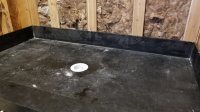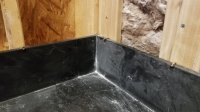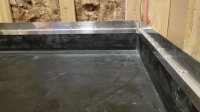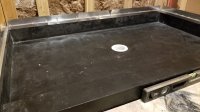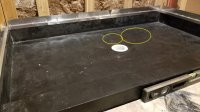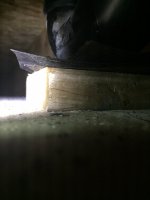IrishSwede
New Member
Here is my situation. We purchased a tileable shower base, installed it following the directions (have done a couple before without issue). We have no flexing, however when weight is removed their is a slight "teeter" between back left corner and front right.
I spoke with the manufacturer who suggested I could add the weight back then pre-drill and use some metal truss head screws to secure the pan to the studs. My concern is 2 of 3 walls are exterior walls and if they move it's going to crack my base. The base is 1/2" think mix of PVC/Fiberglass so it does not have any flex.
The guy I spoke with doesn't fill me with confidence, so hoping I could see what you fellas think?
PS - Removing the base is not an option. I could add trim screws on top to stop it from raising?
I spoke with the manufacturer who suggested I could add the weight back then pre-drill and use some metal truss head screws to secure the pan to the studs. My concern is 2 of 3 walls are exterior walls and if they move it's going to crack my base. The base is 1/2" think mix of PVC/Fiberglass so it does not have any flex.
The guy I spoke with doesn't fill me with confidence, so hoping I could see what you fellas think?
PS - Removing the base is not an option. I could add trim screws on top to stop it from raising?

